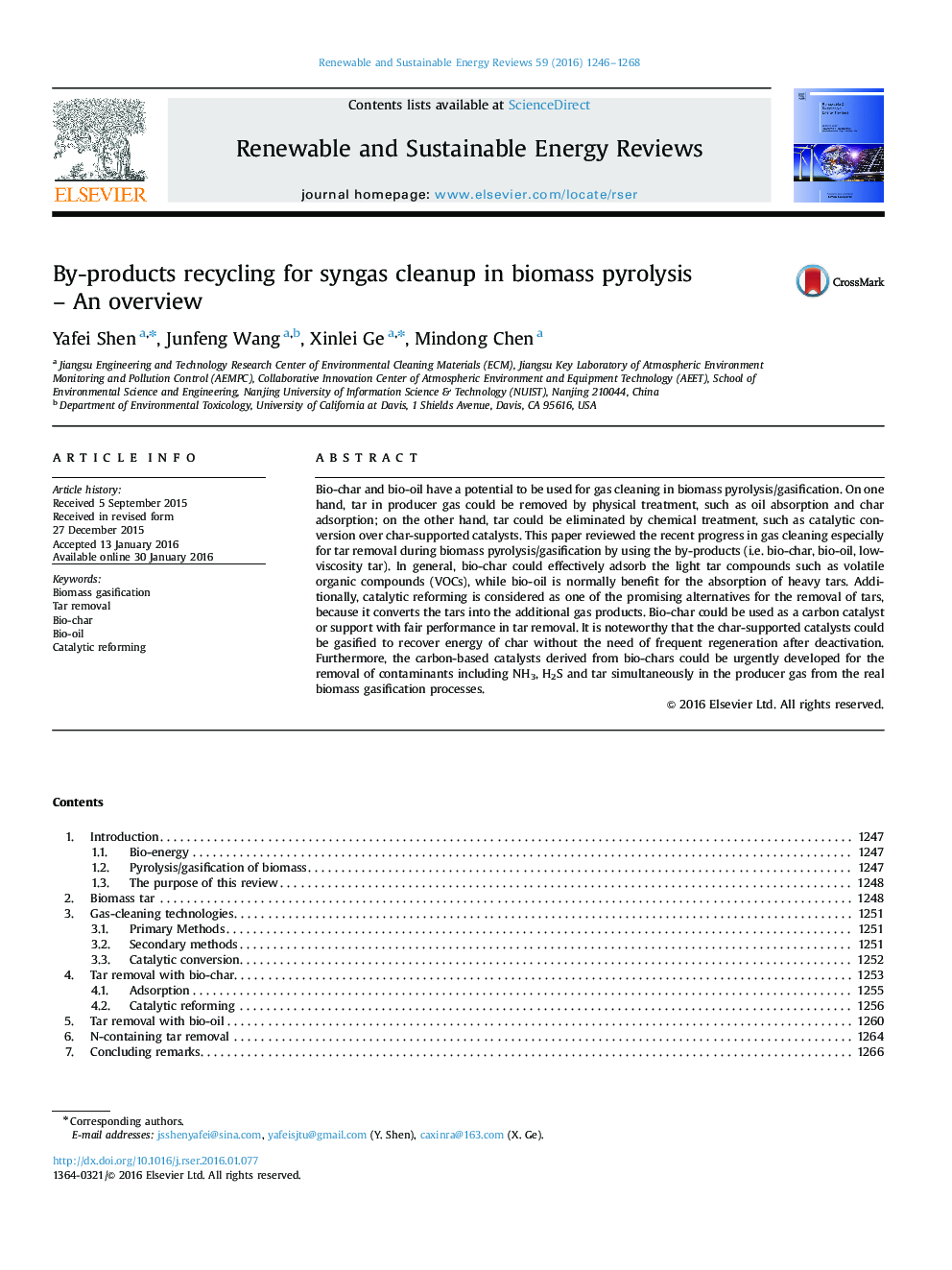| Article ID | Journal | Published Year | Pages | File Type |
|---|---|---|---|---|
| 8114525 | Renewable and Sustainable Energy Reviews | 2016 | 23 Pages |
Abstract
Bio-char and bio-oil have a potential to be used for gas cleaning in biomass pyrolysis/gasification. On one hand, tar in producer gas could be removed by physical treatment, such as oil absorption and char adsorption; on the other hand, tar could be eliminated by chemical treatment, such as catalytic conversion over char-supported catalysts. This paper reviewed the recent progress in gas cleaning especially for tar removal during biomass pyrolysis/gasification by using the by-products (i.e. bio-char, bio-oil, low-viscosity tar). In general, bio-char could effectively adsorb the light tar compounds such as volatile organic compounds (VOCs), while bio-oil is normally benefit for the absorption of heavy tars. Additionally, catalytic reforming is considered as one of the promising alternatives for the removal of tars, because it converts the tars into the additional gas products. Bio-char could be used as a carbon catalyst or support with fair performance in tar removal. It is noteworthy that the char-supported catalysts could be gasified to recover energy of char without the need of frequent regeneration after deactivation. Furthermore, the carbon-based catalysts derived from bio-chars could be urgently developed for the removal of contaminants including NH3, H2S and tar simultaneously in the producer gas from the real biomass gasification processes.
Related Topics
Physical Sciences and Engineering
Energy
Renewable Energy, Sustainability and the Environment
Authors
Yafei Shen, Junfeng Wang, Xinlei Ge, Mindong Chen,
